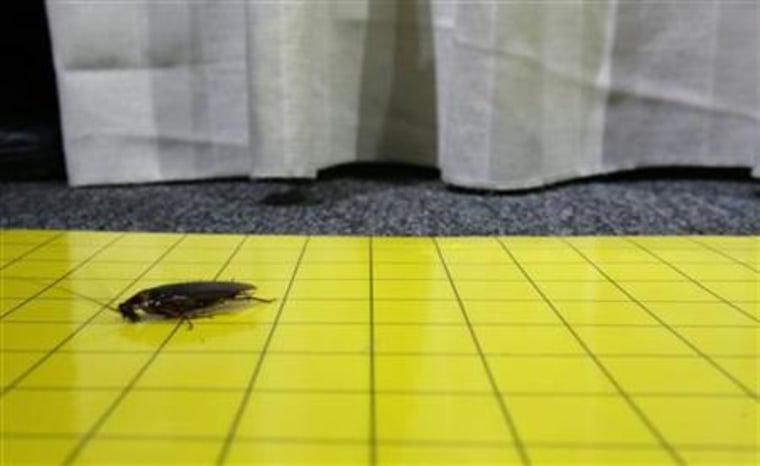NEW YORK (Reuters Health) - Researchers have identified cockroaches as a potential explanation for dramatic variations between neighborhoods in asthma rates among New York City children.
In some New York City neighborhoods, 19 percent -- nearly 1 in 5 -- children have asthma; in others, the rate is as low as 3 percent.
Heavy traffic, industrial incinerators, and other outdoor air pollution sources have been blamed in the past as potential contributors to asthma differences across the city.
Now, researchers at Columbia University have found that children living in neighborhoods with high rates of asthma were twice as likely to carry antibodies against a cockroach protein in their blood, a sign the kids had been exposed to the insects and were likely allergic to them.
In addition, homes in the neighborhoods with high rates of asthma contained more of the allergen produced by cockroaches in household dust.
This study provides "further evidence that cockroach exposure is part of the story," study author Dr. Matthew Perzanowski told Reuters Health. "Cockroach allergen really could be contributing to disparities in asthma prevalence, even in an urban environment like New York City."
These findings also suggest that controlling cockroaches may help eliminate some of those disparities, Perzanowski noted. But parents don't want to spray tons of harmful chemicals, which could "have other detrimental effects," he added.
Instead, people can take simple steps such as sealing up any cracks, and removing food and water sources. (The New York City Department of Health and Mental Hygiene offers advice for combatting roaches at http://www.nyc.gov/html/doh/html/ehs/ehscroach.shtml)
To investigate why some city neighborhoods have more asthma cases than others, Perzanowski and his team visited the homes of 239 seven- and eight-year-olds, half of whom lived in areas with high asthma rates.
Previous research has linked poverty to an increased risk of asthma in childhood. To eliminate the influence of income on the results, the authors only included families with the same middle-income health insurance plan, to ensure they had the same income and access to health care.
More than half of the children already had asthma.
During home visits, the researchers collected dust from the children's beds, then took blood samples to look for antibodies against various allergens associated with asthma -- including cat, dog, mouse, dust mite and cockroach proteins.
Nearly 1 in 4 kids living in neighborhoods with high asthma rates appeared to be allergic to cockroaches, compared to 1 in 10 kids living in areas where asthma is less common.
Homes in high-asthma communities also had higher concentrations of the cockroach allergen, as well as allergens associated with mice and cats, the authors report in the Journal of Allergy and Clinical Immunology.
In addition, kids who were allergic to cockroaches and mice were more likely to have asthma, noted Dr. Joanne Sordillo at the Channing Laboratory, affiliated both with Brigham and Women's Hospital and Harvard Medical School, who reviewed the findings for Reuters Health.
"Mouse or cockroach allergen exposure may increase the risk of allergic sensitization (allergies), which is in turn related to the development of asthma in children," she said in an email.
Although cockroach protein sensitization was more common in kids in high-asthma neighborhoods, overall, children who were allergic to dust and cats were also more likely to have asthma.
Perzanowski explained that cockroaches leave behind proteins that people inhale and can become allergic to, which in turn increases the chance they will develop asthma.
But when it comes to cat ownership, the picture gets a bit murkier, he explained. Some previous research has found that kids in homes with cats were more likely to be allergic, but in this study, having a cat did not predispose kids to asthma.
"It's complicated," the researcher said. "Avoidance of cats doesn't seem to reduce your risk of developing asthma."
SOURCE: http://bit.ly/km9BZP Journal of Allergy and Clinical Immunology, online May 4, 2011.
